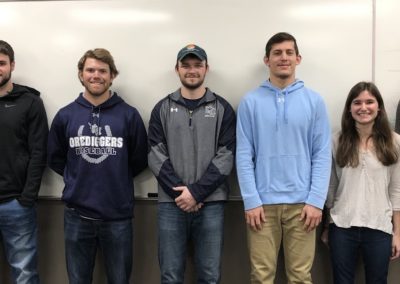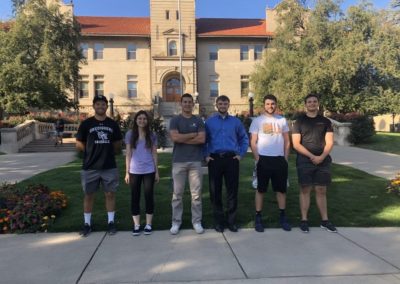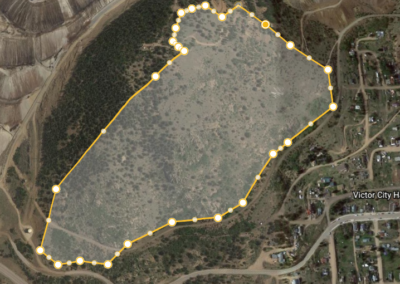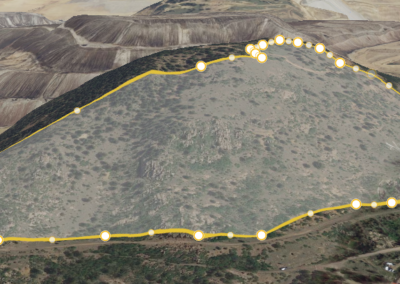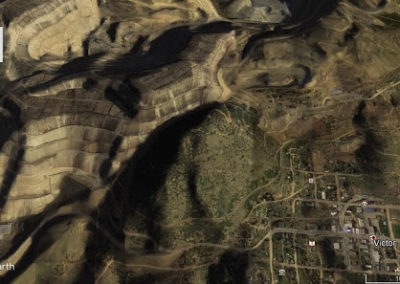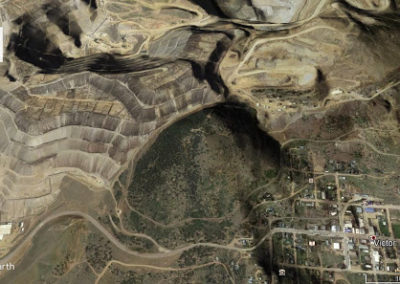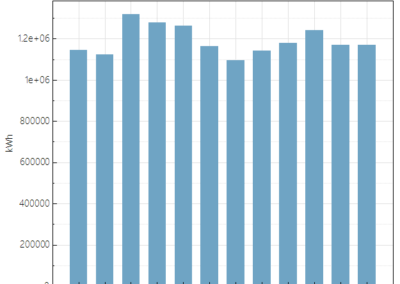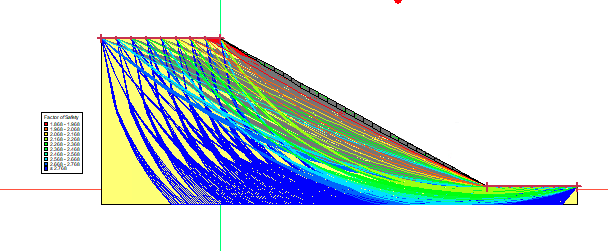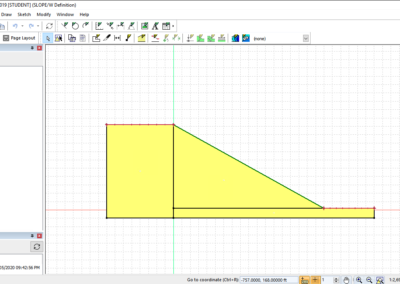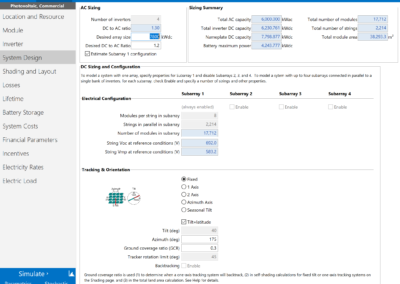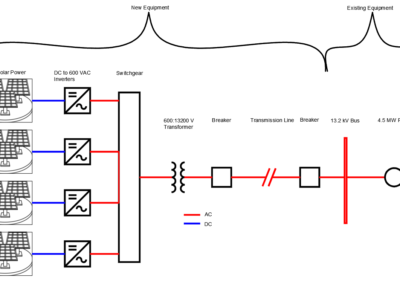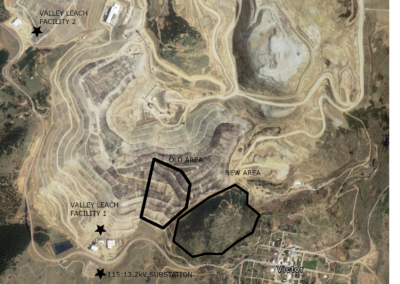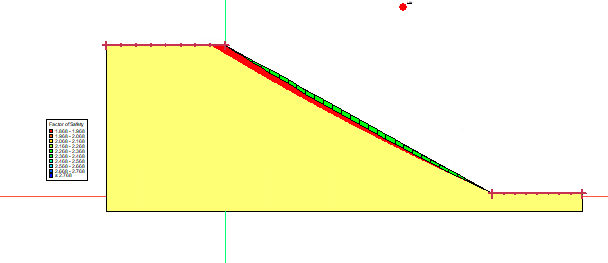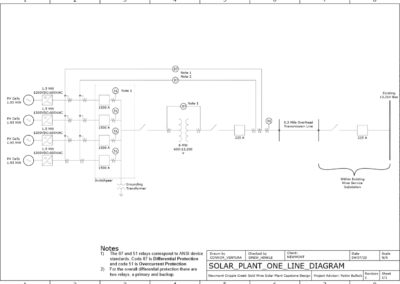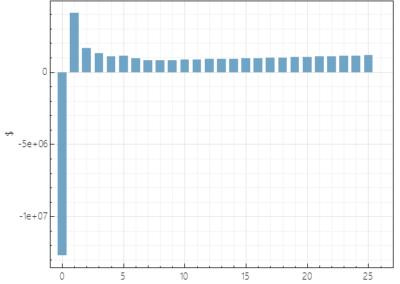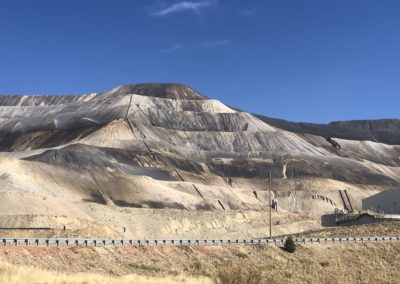Cripple Creek and Victor Solar Plant
Overview
Newmont is the world’s leading gold company and a producer of copper, silver, zinc, and lead. They own mines in North and South America, Australia, and Africa. Their company strategy focuses on sustainable and responsible mining. Newmont is investigating building a solar array at the Cripple Creek and Victor Gold Mine (CC&V) in Colorado. The goal of this project is to determine the feasibility and design of a solar plant that could lower electricity costs by providing sustainable energy, reduce carbon emissions, and show environmental leadership within the industry. The power generated will be used to offset the energy demand of the pumps used at Valley Leach Facility 2 for the remainder of the mine life as well as the reclamation process after the leaching has stopped. Additionally, Black Hills Energy will buy back any excess power that is generated and the solar array will continue to be a valuable asset to Newmont after the mine closes because the life of the array will outlast the life of the mine.
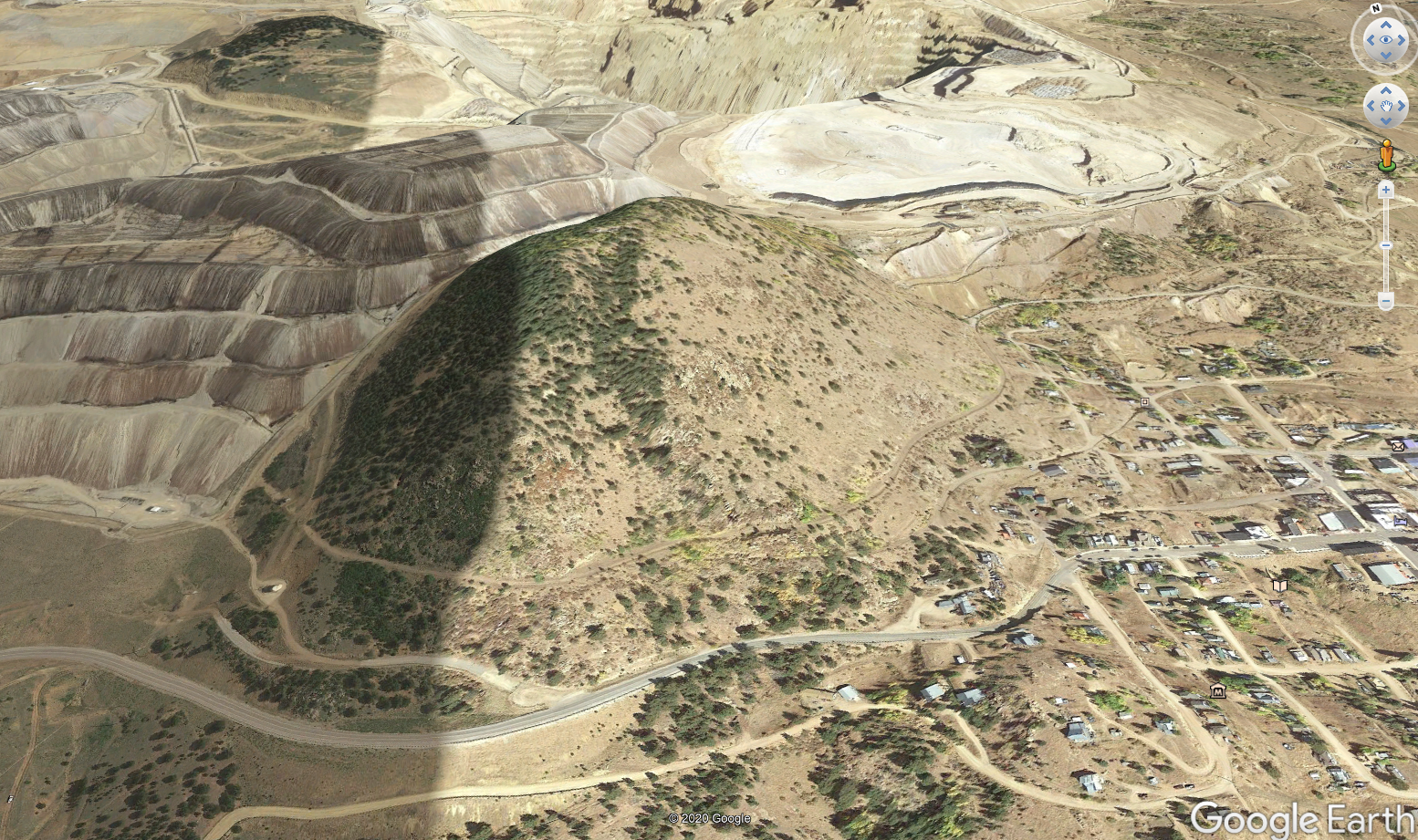
Team Members
- Connor Ventura
- Drew Hinkle
- Conlan Berger
- Megan Carter
- Ryan Buxman
- Trevor Howard
- Elle Lueth
The Client
- Mike Aires
- Newmont
Acknowledgements
Project Advisor: Dr. Robin Bullock
Client: Mike Aires
Electrical Advisor: Prof. Keith Malmedal
Civil Advisor: Prof. Alexandra Wayllace
Economic Advisor: Prof. Andrew Peterson
Elevator Pitch
Design Approach
Because this is a project that does not have some sort of prototyping product, a less iterative process was used. The design was started at a high level and gradually moved into more detailed design throughout the course. Initially the team looked into three renewable methods: photovoltaic (PV), wind, and hydro. After evaluation of the environmental factors of the site, such as geographic factors, solar irradiation, and weather patterns, it was determined that photovoltaic electric generation was the most cost effective method.
The team approached this design by splitting it into three major components.
- Civil Engineering Analysis
- Electric Systems
- Economics
Before other work could start, the solar panel was chosen. This was done using a python script that ranked and sorted 55 different solar panels by price, power output per area, and efficiency. Weather data including wind speeds and solar irradiance was analyzed based on data provided by a weather station at Cripple Creek and Victor Mine. When the chosen slope for panels changed, all the same calculations were used to calculate power output and panel quantity.
Civil Engineering Analysis
Once the solar plant was determined feasible, detailed civil work began, including a stope stability analysis. Three direct shear tests were also done on a soil sample from the slope to input into GeoStudio. GeoStudio determined:
- The slip surface ranged in depth from 3 to 15 ft depending on elevation. (The depth of the slip surface gives a guide to how far piers will need to be drilled in to secure the solar panels.)
- The factor of safety was between 1.87 and 1.97 which indicates the slope will be stable without benches. (Above 1 is safe)
Below in Figure 1 is a screenshot of GeoStudio in use.
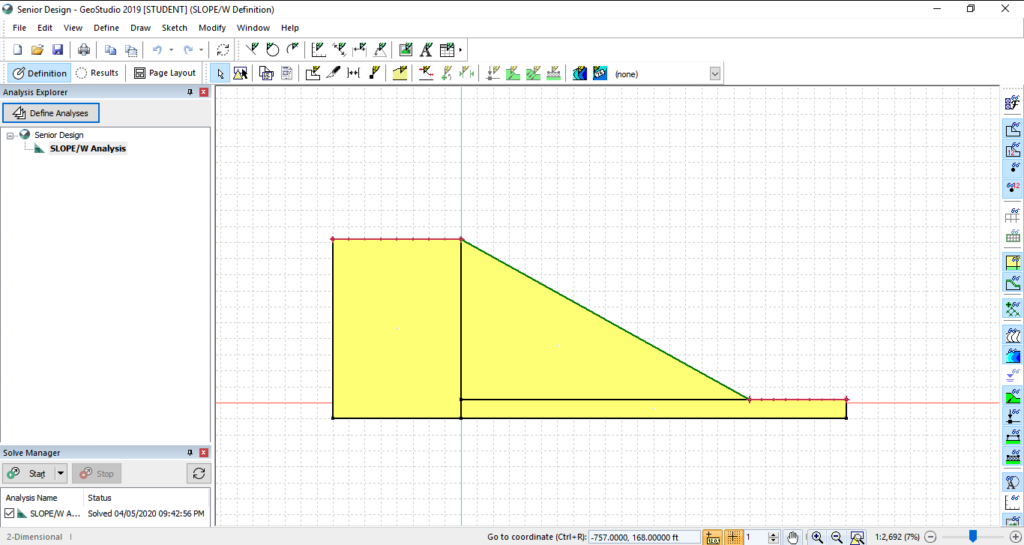
Figure 1: GeoStudio Model
The team then used The System Advisor Model (SAM) software, created by the National Renewable Energy Laboratories, to simulate the proposed generation site. This software was used to accurately calculate monthly power generation from our area based on solar panel choice, weather data, and slope orientation (S-E). Below in Figure 2 is a screenshot of the software in use.
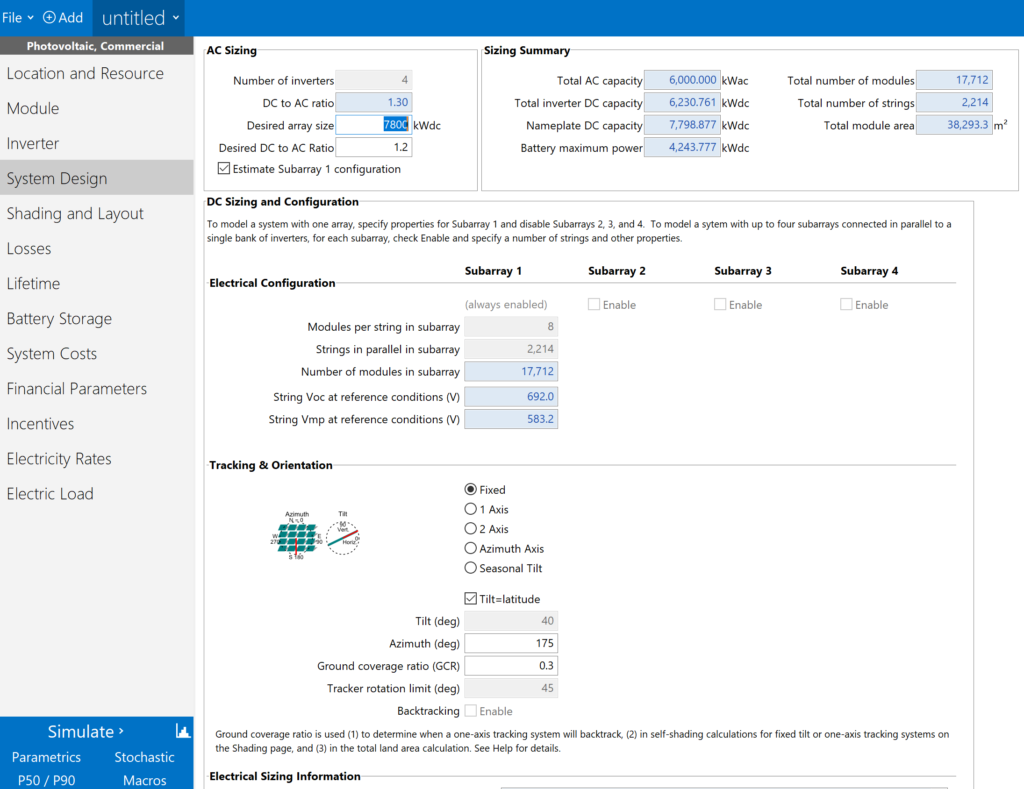
Figure 2: System Advisor Model software in use.
Electric Systems
The team designed the following with help from our technical advisor, power coursework and research.
- Flowchart – High Level diagram showing general flow of power and equipment needed.
- One Line Diagram – Low level electrical connection diagram showing the equipment and protection scheme.
- Bill of Materials – Includes price estimates and details for all major equipment.
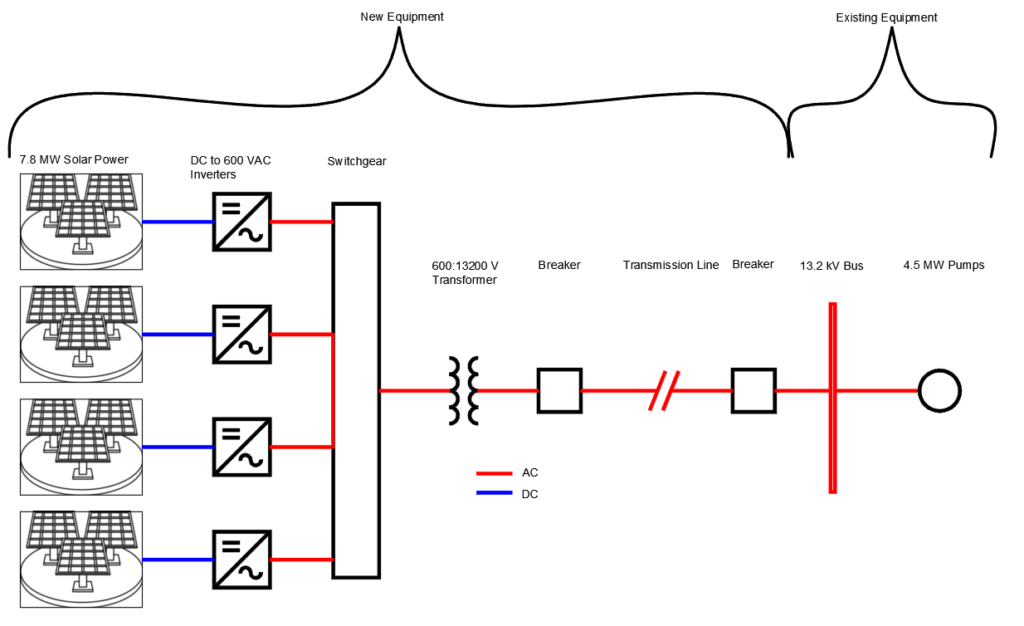
Figure 3: Electrical system flowchart from solar panels to pumps.
Economics
For economic analysis, the SAM software was primarily used. SAM considered chosen equipment, power output, current tax credits, the price of power that Newmont pays, and other variables to output NPV, detailed cash flows and other economic models. The SAM software was also used to prove that battery storage is not worth the capital cost.
Design Solution
Design Solution
Under the guidance of technical advisors and Mike Aires, a design for a solar array was developed using typical industry engineering calculations and analysis. The design is a simple, efficient system that will provide the following:
- 7.8 MW of renewable power to the Cripple Creek and Victor Mine.
- Approximately 47 MWh/day of energy to mine.
- Approximately 2,126 tons of CO2 emissions saved annually from coal plants.
Civil Engineering Analysis
With the help of our professors, we were able to run soil tests and analyse the slope stability in GeoStudio. This concluded that the hillside would not need benches for stability. Without benches, there is more area available for solar panels and therefore more power.
Slope Information:
- 38.94 acres
- Slope faces SE
- 29 degree average slope
- 17,000 panels mounted at 38 degrees
- Receives an annual average of 8 hrs of light per day
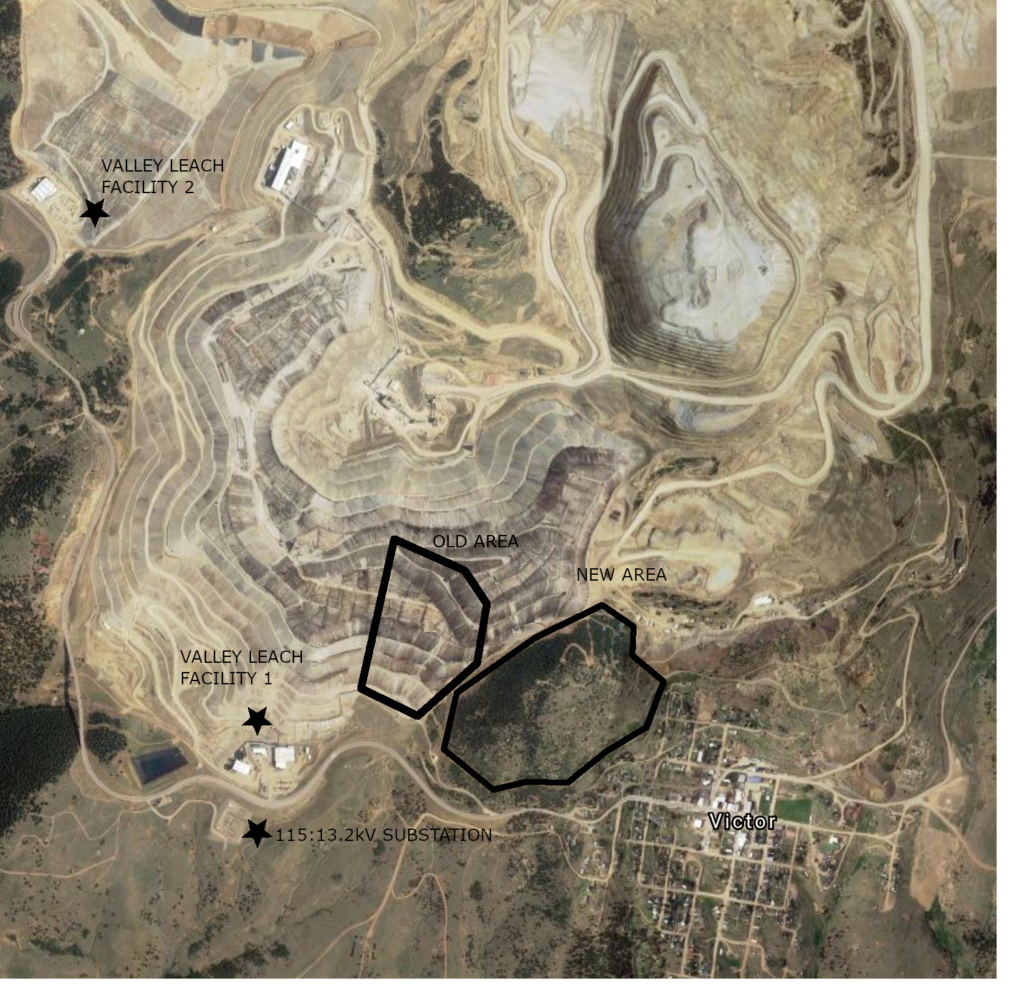
Figure 4: Aerial view of mine and planned solar plant location.
The three direct shear tests and GeoStudio helped to generate the following model, which shows that the piers should be drilled 3-15ft deep, depending on the location, to maintain a minimum safety factor of 1.87.
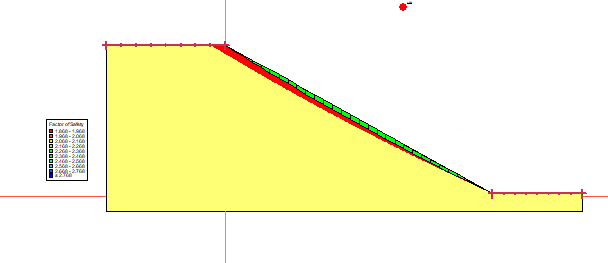
Figure 5: Slope Stability Model with Minimum Factor of Safety Area
Electric Systems
The solar panels are broken into four branches, each consisting of 1.95 MW connected to a 1.5 MW inverter and a 1500 A breaker. These 1500 A breakers are all contained in the switch gear, which can be used to isolate any branch for maintenance or in case of emergency. The inverters are used to convert DC from the solar panels to AC. The switchgear connects to a transformer which steps up the voltage to 13,200 V. From here, the output is ran 0.3 miles in an overhead line and connects to a 13.2kV bus in the existing substation. Digital relays are used to monitor the circuit.
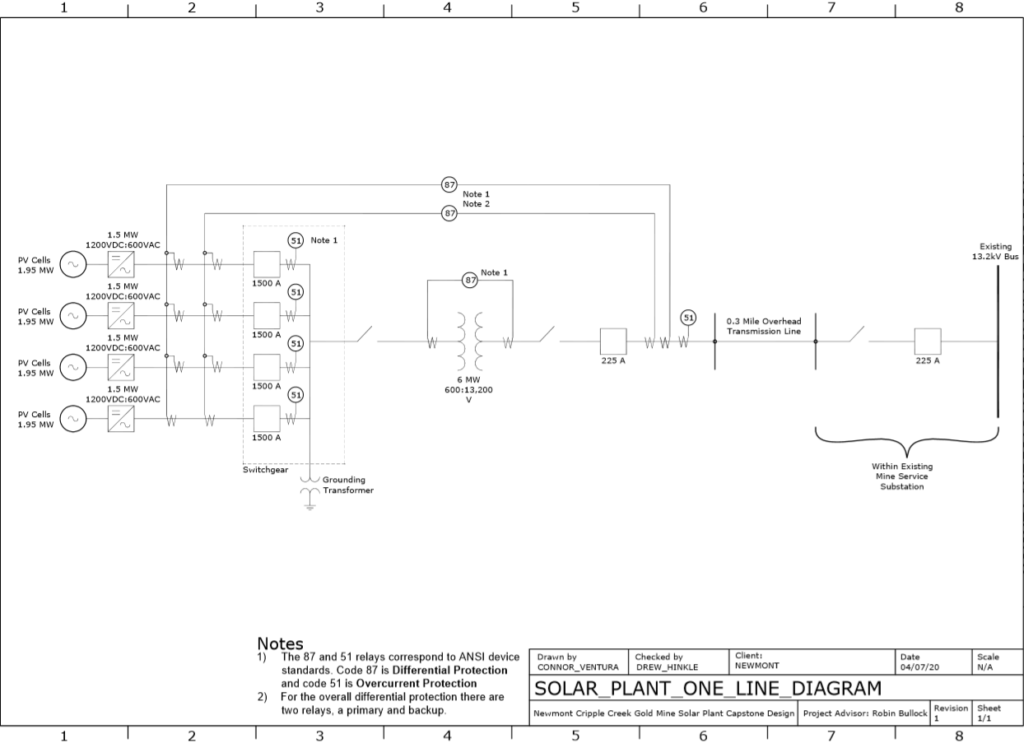
Figure 6: One line and protection scheme for photovoltaic generation site.
Economics
Figure 7 shows the cash flows of our project for the life of the solar panel or 25 years as generated by SAM. Table 1 shows an economic summary of the project. The cost of electricity that Newmont is currently buying is a little over 9 cents per kW, so the cost was reduced by over 3 cents per kW.
|
Capital Costs |
$12,100,000 |
|
Cost per kW |
6 cents |
|
NPV @ 5% |
$1,700,000 |
|
Rate of Return |
10% |
|
Payback Period |
15 Years |
Table 1: Financial summary of design
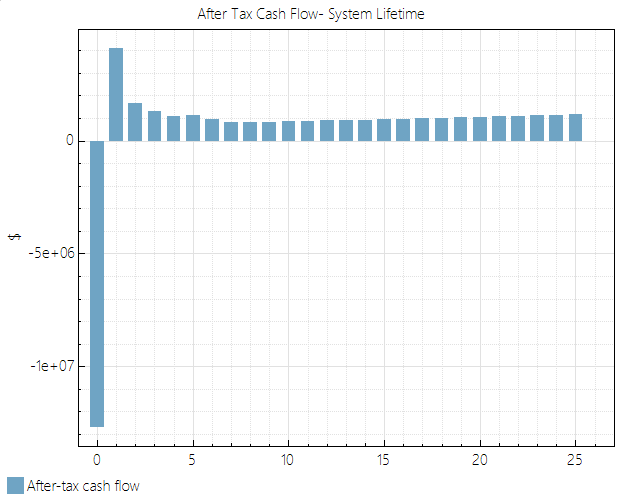
Figure 7: Cash flows throughout project life
Overall, the team achieved the original goal of the project. Newmont wants to reduce the cost of electricity, reduce carbon pollution caused by the plant, and show industry leadership. As shown above, the installation would reduce the cost of electricity from ¢9/kW to ¢6/kW. More importantly the site is estimated to offset 2,216.84 tons of CO2 annually. Furthermore, if Newmont was to act on the design quickly, they would become one of the earliest adopters of renewable energies in the mining industry.
Next Steps
At this point in the project, a high level design of the solar plant has been created and deemed economically feasible for Newmont to implement. Moving forward, a more detailed design of the electrical connections in the system is required. Beyond the one-line diagram the team has produced, more specific connection diagrams need to be produced to complete the detailed design of the full electrical system. Once the full design is complete, Newmont should move to acquire a quote for the installation of the solar panels and electrical connections. GameChange Solar, the company that the team was in contact with for installation, gave a pre-estimate for the cost of installation and stated that they would need to send representatives to the site in order to generate a full quote. Finally, Newmont should begin the process of procuring the necessary equipment for construction and begin installation.
Meet the Team
Connor Ventura
 I am a senior in Electrical Engineering here at Mines. While here, I competed on the varsity wrestling team at 184 pounds. I also enjoy skiing and trying new restaurants when I’m not making weight. Last summer, I worked at Black and Veatch in Kansas City on a substation design team. This gave me experience in the power industry, where I will now be continuing my career. For this project I focused on the electrical side, sizing the equipment and helping design a protection scheme and oneline.
I am a senior in Electrical Engineering here at Mines. While here, I competed on the varsity wrestling team at 184 pounds. I also enjoy skiing and trying new restaurants when I’m not making weight. Last summer, I worked at Black and Veatch in Kansas City on a substation design team. This gave me experience in the power industry, where I will now be continuing my career. For this project I focused on the electrical side, sizing the equipment and helping design a protection scheme and oneline.
Ryan Buxman
 My name is Ryan Buxman, I am a mechanical engineer that is minoring in computer science. In my free time I enjoy learning new things. I do a lot of personal projects such as building 3D printers, an arduino controlled solar boost converter, and various electronic projects to develop my EE skills. I also enjoy skiing and hiking.
My name is Ryan Buxman, I am a mechanical engineer that is minoring in computer science. In my free time I enjoy learning new things. I do a lot of personal projects such as building 3D printers, an arduino controlled solar boost converter, and various electronic projects to develop my EE skills. I also enjoy skiing and hiking.
Trevor Howard
 I am a senior in mechanical engineering and also play center field for the Mines baseball team. I am most interested in the aerospace applications of mechanical engineering with propulsion in particular. This past summer I worked for Lockheed Martin on the propulsion sub-systems for their commercial and deep-space satellites. As a result of this work experience and my course work, I am familiar with thermodynamics and fluids systems.
I am a senior in mechanical engineering and also play center field for the Mines baseball team. I am most interested in the aerospace applications of mechanical engineering with propulsion in particular. This past summer I worked for Lockheed Martin on the propulsion sub-systems for their commercial and deep-space satellites. As a result of this work experience and my course work, I am familiar with thermodynamics and fluids systems.
Conlan Berger
 My name is Conlan Berger, I am a mechanical engineer with a minor in computational and applied mathematics. I am a member of the football team as well. I want to work in the aerospace field, particularly in the design aspect. I am looking forward to learning all the little details of using solar power in a commercial setting within our given problem definition.
My name is Conlan Berger, I am a mechanical engineer with a minor in computational and applied mathematics. I am a member of the football team as well. I want to work in the aerospace field, particularly in the design aspect. I am looking forward to learning all the little details of using solar power in a commercial setting within our given problem definition.
Megan Carter
 My name is Megan Carter, and I am a senior majoring in mechanical engineering. This past summer I worked for Sierra Nevada Corporation on spacecraft modification doing mostly 3D modeling and reverse engineering. I really enjoy the fluid and thermodynamics side of mechanical engineering. For this project I focused on the economics of our solar farm to make sure our project was financially feasible.
My name is Megan Carter, and I am a senior majoring in mechanical engineering. This past summer I worked for Sierra Nevada Corporation on spacecraft modification doing mostly 3D modeling and reverse engineering. I really enjoy the fluid and thermodynamics side of mechanical engineering. For this project I focused on the economics of our solar farm to make sure our project was financially feasible.
Elle Lueth
 I am a senior, majoring in Civil Engineering, at Colorado School of Mines. My main interests are in roadway design and construction engineering. Last summer, I worked at Stanley Consultants in the transportation department helping to redesign intersections and making them more handicap accessible. Outside of my schoolwork, I have a personal interest in renewable energy which is why I chose this project. I have enjoyed learning about the process of implementing a solar plant.
I am a senior, majoring in Civil Engineering, at Colorado School of Mines. My main interests are in roadway design and construction engineering. Last summer, I worked at Stanley Consultants in the transportation department helping to redesign intersections and making them more handicap accessible. Outside of my schoolwork, I have a personal interest in renewable energy which is why I chose this project. I have enjoyed learning about the process of implementing a solar plant.
